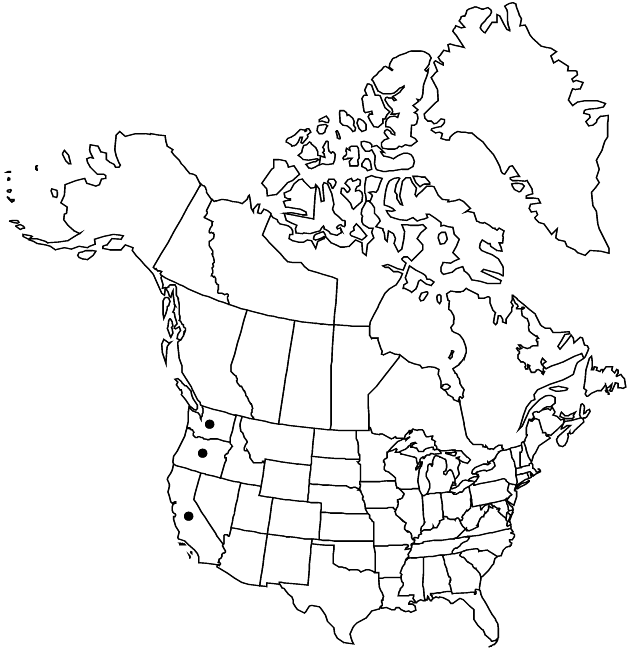Agoseris ×elata
Pittonia 2: 177. 1891.
Stems 0. Leaves erect to ascending; blades usually oblanceolate, sometimes lanceolate or obovate, 15–25 cm, margins usually toothed to lobed or pinnatifid, rarely entire, lobes 2–4 pairs, lanceolate to triangular, antrorse to spreading, lobules mostly 0, faces glabrous and glaucous or sparsely villous. Peduncles ± elongating after flowering, 15–65(–90) cm in fruit, glabrate, or apically pubescent or villous, ± stipitate-glandular. Involucres obconic to campanulate, 2–4 cm in fruit. Phyllaries in 2–4 series, medially rosy purple, sometimes purple-black apically, rarely all green or purple-black spotted, faces pubescent to villous, ± stipitate-glandular; outer mostly spreading, adaxially ± villous and eglandular; inner erect, elongating after flowering. Receptacles epaleate. Florets (25–)50–150; corollas orange or yellow, tubes 8–10 mm, ligules 6–8(–12) × 1–3 mm; anthers 2–3(–5) mm. Cypselae (11–)14–20 mm, bodies ± fusiform, (6–)8–10 mm, beaks 5–10 mm, mostly equaling bodies; ribs broadly ridged, straight; pappus bristles in 2–3 series, 10–14 mm.
Phenology: Flowering Jun–Sep.
Habitat: Lowland prairies
Elevation: 10–100 m
Distribution

Oreg., Wash., and montane meadows or open pine forests, 1400–2800 m, Calif., Oreg., Wash.
Discussion
Agoseris ×elata has been and continues to be an enigmatic taxon. Perhaps no other name in the genus has been so misunderstood and misapplied. Many herbarium specimens labeled A. ×elata are in fact misidentified. Specimens of A. ×elata are not abundant in herbaria; the number of actual collections is relatively small compared to those for other Agoseris. Specimens that belong to A. ×elata represent a complex assemblage that has relatively few defining features and appears to be of hybrid origin. Most specimens appear to be intermediate between A. grandiflora and A. aurantiaca; most also appear to have characteristics of A. monticola or A. glauca var. dasycephala. The exact parentage remains unclear.
Agoseris ×elata occurs in two geographically separated populations, which cannot be consistently distinguished morphologically: one mainly in scattered lowland prairie locations in the Puget Sound and Willamette Valley areas (the type collection came from this popula tion; no new collections have been taken from this region in over 65 years; it is likely extirpated) and another at high elevations in California, primarily in the Lake Tahoe region and southward in the Sierra Nevada.
Selected References
None.